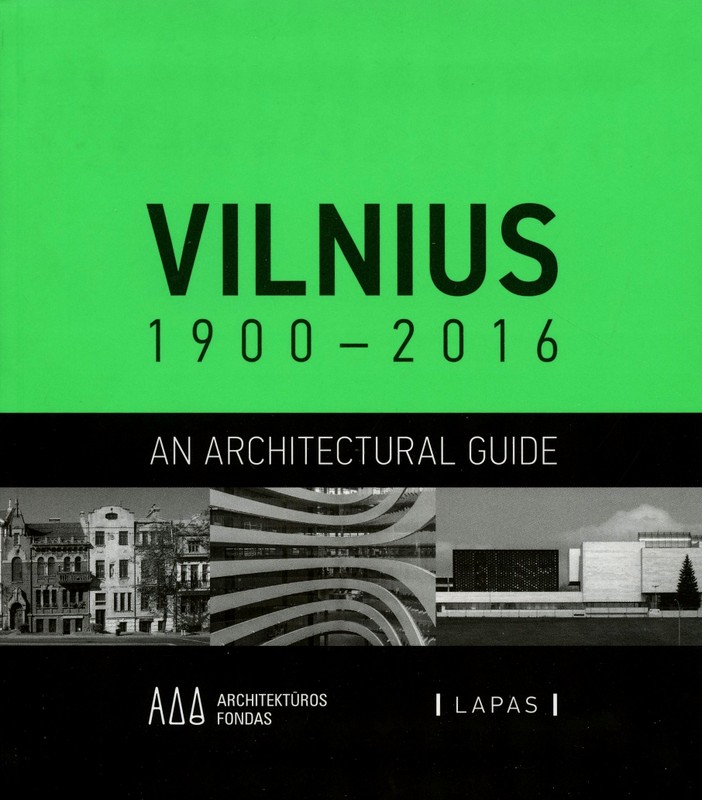
- Išparduota

- Autorius: Julija Reklaitė, Rūta Leitanaitė, Marija Drėmaitė
- Leidėjas: Lapas
- Metai: 2016
- Puslapiai: 356
- ISBN: 9786099548494
- Versijos kodas: PT.
- Formatas: 15,5 x 17,5 x 2 cm, minkšti viršeliai
- Kalba: Anglų
Vilnius, 1900-2016: an architectural guide | knygos.lt
Atsiliepimai
Aprašymas
Vilnius architecture of the 20th and early 21st centuries ranges from the Modern Style to High-Tech, and reflects all the architectural trends and political shifts that swept across the city during this period.
At the dawn of the 20th century, the elegant Central European Sezession style was still in vogue. Architecture later progressed to the striped-down interwar Modernism of the 1920s and 1930s, and afer the Second World War it ventured into the contravesial soviet-imposed Neoclassicism. In the mid-1950's, postwar Modernism flourished, particularly in the new residential districts that were built to house the city's growing population. At the end of the Soviet period, Late Modernism saw large number of public buildings appear around the city centre.
With the reestablishment of independence in 1990 Vilnius experienced yet another wave of urbanization. Private houses were built again, filling the city to the limits, and a spectacular steel and glass city centre took shape on the right bank of River Neris.
The Modern Style 1900-1918
The Interwar Period 1918-1940
The Soviet Years 1940-1990
After the Restoration of Independance 1990-2016
- Kaina: 21,39 €
Perskaityta knyga:
Nenauja knyga, kurią parduoda privatus žmogus.
Knygą išsiųs knygos pardavėjas TomTom.
Pardavėjo reitingas: 85%
Kiti šios knygos leidimai:



- Autorius: Julija Reklaitė, Rūta Leitanaitė, Marija Drėmaitė
- Leidėjas: Lapas
- Metai: 2016
- Puslapiai: 356
- ISBN: 9786099548494
- Versijos kodas: PT.
- Formatas: 15,5 x 17,5 x 2 cm, minkšti viršeliai
- Kalba: Anglų
Vilnius architecture of the 20th and early 21st centuries ranges from the Modern Style to High-Tech, and reflects all the architectural trends and political shifts that swept across the city during this period.
At the dawn of the 20th century, the elegant Central European Sezession style was still in vogue. Architecture later progressed to the striped-down interwar Modernism of the 1920s and 1930s, and afer the Second World War it ventured into the contravesial soviet-imposed Neoclassicism. In the mid-1950's, postwar Modernism flourished, particularly in the new residential districts that were built to house the city's growing population. At the end of the Soviet period, Late Modernism saw large number of public buildings appear around the city centre.
With the reestablishment of independence in 1990 Vilnius experienced yet another wave of urbanization. Private houses were built again, filling the city to the limits, and a spectacular steel and glass city centre took shape on the right bank of River Neris.
The Modern Style 1900-1918
The Interwar Period 1918-1940
The Soviet Years 1940-1990
After the Restoration of Independance 1990-2016



Atsiliepimai